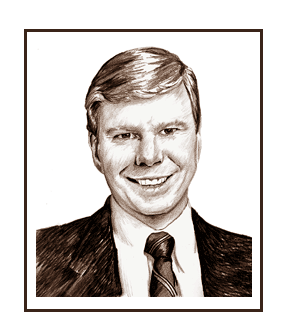INTERVIEW
Objective Trading
John Bollinger Of Bollinger Bands Fame
by Jayanthi Gopalakrishnan
Unlike many technicians who start out with degrees in business, veteran analyst John Bollinger, the president and founder of Bollinger Capital Management, started out with a decidedly unmarket-like bent. He graduated from the School of Visual Arts majoring in cinematography, and only afterward started studying the market. Since then, though, he's become one of the best-known market analysts in the field, with the now-classic Bollinger Bands technique to his credit (which has been integrated into most analytical software currently in use), as well as a slew of other techniques and methods. He is a Chartered Financial Analyst (CFA) and Chartered Market Technician (CMT), is an active member of the financial community, and is a frequent lecturer at national and international investment seminars.
Not only that, Bollinger's Capital Growth Letter provides investment advice for the average investor employing a technically driven asset allocation approach. His Group Power provides industry group analysis using a group structure. Bollinger developed a website called EquityTrader, which provides investors with a quick and easy method of evaluating the past performance and potential appreciation of equities. EquityTrader evaluates its universe of equities using a fuzzy logic engine that considers both technical and fundamental factors, a combination he calls rational analysis.
BollingerOnBollingerBands.com is Bollinger's most recent website. The site provides access to the trading systems that are introduced in his latest book, as well as daily lists of the stocks that qualify for the three methods, mentioned therein. There is also a charting area that includes a variety of indicators and candlestick charts.
After purchasing his first microcomputer in 1977, Bollinger became involved in the seminal stages of computer-driven market analysis. Today, he continues to write some of his own software. STOCKS & COMMODITIESEditor Jayanthi Gopalakrishnan spoke with Bollinger via telephone on February 22, 2002.

My advice to the investor? Be true to yourself, because that's more
important than anything else.
How were Bollinger Bands created?
I created the bands in the very early 1980s. At the time, we used fixed-width bands for market timing. We took an average, say of the Dow Jones Industrial Average (DJIA), and we would shift that average up and down by some percentage, 4% or 5%, and use that as a measure of price action. When prices rallied and tagged the upper band, we would check on various indicators to see whether they confirmed that strength. If they did, we took it as a confirmation signal, and if they didn't, we took it as a nonconfirmation or a sell. Likewise on the downside, if prices made an excursion to the lower band, we would check indicators - most of which were based on either volume or breadth - and see whether the negativity was confirmed. If it wasn't, then we had a buy signal on our hands.
Did this approach work well?
Actually, it had a number of problems, the biggest of which was the selection of the bandwidth. We couldn't decide if they should be 3.5%, 4%, 4.5%, or 5%. Empirically, what we would do was try to fit them so they contained most of the data over the past year or so, and those would be the bands we would use. But doing it that way meant it was a trial-and-error process, and back in those days, we didn't have the computer power that we have today.
So how did you end up doing it?
A lot of it was done by hand or on very slow mainframe computer systems, where you would submit a job and get the answer back hours later. It just wasn't a workable solution. Another problem that came up was that once the correct bandwidth had been identified, it would change over time. There might be one year where 3.5% or 4% bands are the appropriate bandwidth, whereas in the following year, 5% or 6% might be. It was not only a terrible problem to solve each time, but you also had to keep going back and revisiting the problem.
What did you do to solve it?
I looked for some methodology that would allow the bands to be set automatically.
At the time, I was very interested in the options business - options, warrants,
convertibles, rights, and so on. Because of that I thought a tremendous
amount about volatility. In those days volatility was only calculated in
a static manner, which means you would have to go back to a stock and calculate
the standard deviation for the past six months or the past year, and only
then would you use that number going forward. We did it this way mainly
because it was too difficult analytically to do it any other way. Fortunately,
I had one of the first microcomputers - an old CP/M operating system -
and I actually had a spreadsheet called SuperCalc. This allowed the calculation
and recalculation of items on a daily basis. So my real contribution was
to change the calculation of volatility from a static calculation to a
dynamic one, and couple that with a moving average to provide a set of
trading bands.
...Continued in the May 2002 issue of Technical Analysis of STOCKS & COMMODITIES
Excerpted from an article originally published in the May 2002 issue of Technical Analysis of STOCKS & COMMODITIES magazine. All rights reserved. © Copyright 2002, Technical Analysis, Inc.